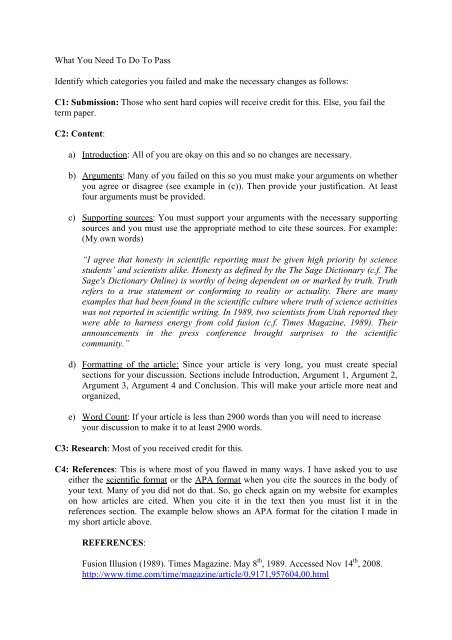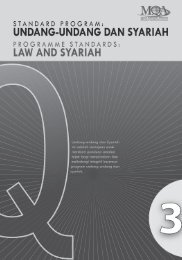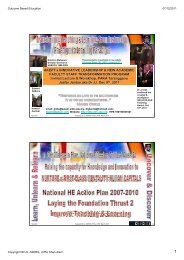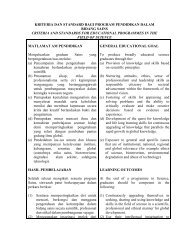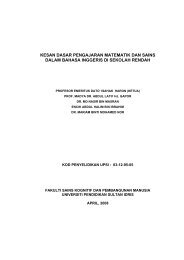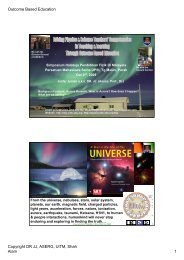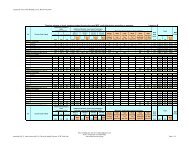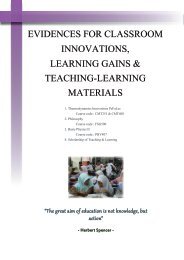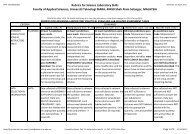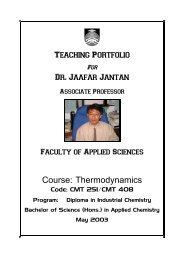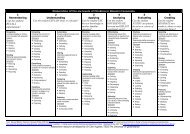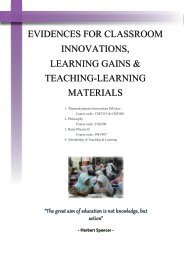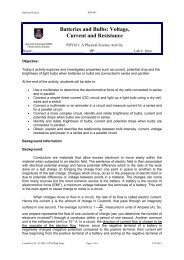Philosophy of Science Rubrics for the Final Term Paper FSG ... - DrJJ
Philosophy of Science Rubrics for the Final Term Paper FSG ... - DrJJ
Philosophy of Science Rubrics for the Final Term Paper FSG ... - DrJJ
You also want an ePaper? Increase the reach of your titles
YUMPU automatically turns print PDFs into web optimized ePapers that Google loves.
What You Need To Do To Pass<br />
Identify which categories you failed and make <strong>the</strong> necessary changes as follows:<br />
C1: Submission: Those who sent hard copies will receive credit <strong>for</strong> this. Else, you fail <strong>the</strong><br />
term paper.<br />
C2: Content:<br />
a) Introduction: All <strong>of</strong> you are okay on this and so no changes are necessary.<br />
b) Arguments: Many <strong>of</strong> you failed on this so you must make your arguments on whe<strong>the</strong>r<br />
you agree or disagree (see example in (c)). Then provide your justification. At least<br />
four arguments must be provided.<br />
c) Supporting sources: You must support your arguments with <strong>the</strong> necessary supporting<br />
sources and you must use <strong>the</strong> appropriate method to cite <strong>the</strong>se sources. For example:<br />
(My own words)<br />
“I agree that honesty in scientific reporting must be given high priority by science<br />
students’ and scientists alike. Honesty as defined by <strong>the</strong> The Sage Dictionary (c.f. The<br />
Sage's Dictionary Online) is worthy <strong>of</strong> being dependent on or marked by truth. Truth<br />
refers to a true statement or con<strong>for</strong>ming to reality or actuality. There are many<br />
examples that had been found in <strong>the</strong> scientific culture where truth <strong>of</strong> science activities<br />
was not reported in scientific writing. In 1989, two scientists from Utah reported <strong>the</strong>y<br />
were able to harness energy from cold fusion (c.f. Times Magazine, 1989). Their<br />
announcements in <strong>the</strong> press conference brought surprises to <strong>the</strong> scientific<br />
community.”<br />
d) Formatting <strong>of</strong> <strong>the</strong> article: Since your article is very long, you must create special<br />
sections <strong>for</strong> your discussion. Sections include Introduction, Argument 1, Argument 2,<br />
Argument 3, Argument 4 and Conclusion. This will make your article more neat and<br />
organized,<br />
e) Word Count: If your article is less than 2900 words than you will need to increase<br />
your discussion to make it to at least 2900 words.<br />
C3: Research: Most <strong>of</strong> you received credit <strong>for</strong> this.<br />
C4: References: This is where most <strong>of</strong> you flawed in many ways. I have asked you to use<br />
ei<strong>the</strong>r <strong>the</strong> scientific <strong>for</strong>mat or <strong>the</strong> APA <strong>for</strong>mat when you cite <strong>the</strong> sources in <strong>the</strong> body <strong>of</strong><br />
your text. Many <strong>of</strong> you did not do that. So, go check again on my website <strong>for</strong> examples<br />
on how articles are cited. When you cite it in <strong>the</strong> text <strong>the</strong>n you must list it in <strong>the</strong><br />
references section. The example below shows an APA <strong>for</strong>mat <strong>for</strong> <strong>the</strong> citation I made in<br />
my short article above.<br />
REFERENCES:<br />
Fusion Illusion (1989). Times Magazine. May 8 th , 1989. Accessed Nov 14 th , 2008.<br />
http://www.time.com/time/magazine/article/0,9171,957604,00.html


